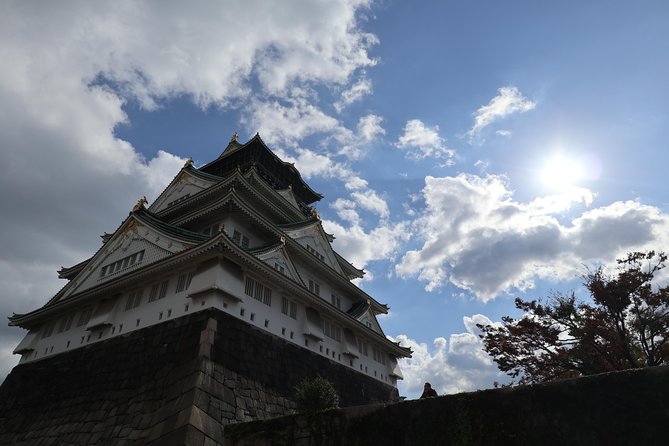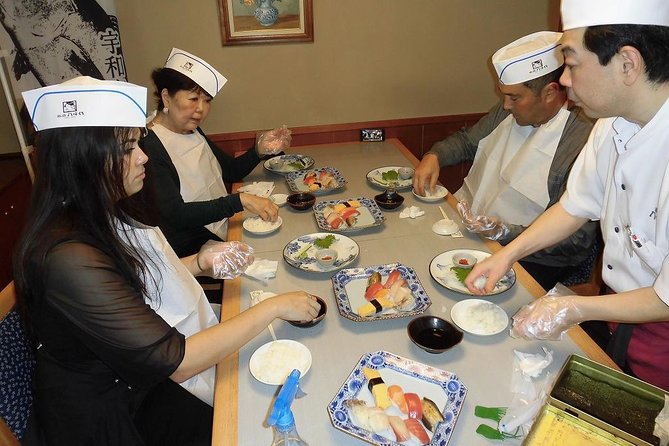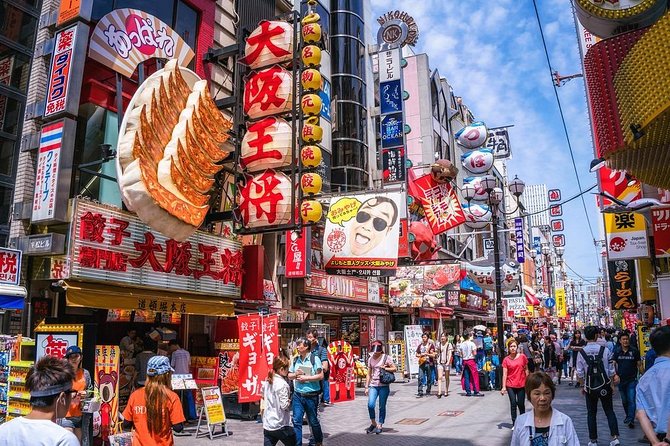For seasoned adventurers and thrill-seekers, the Mt. Fuji Trekking 1 Day Tour up to the Summit is the ultimate challenge. This guided expedition takes you from the Fifth Station to the pinnacle of Japan’s iconic mountain, navigating steep trails and breathtaking vistas along the way. As you ascend higher, the air thins, and the scenery becomes increasingly dramatic. But what lies beyond the Seventh Station, where the climb gets steeper and the winds grow stronger? Can you push through the physical demands and reach the summit, where the reward is a view like no other?
Just The Basics
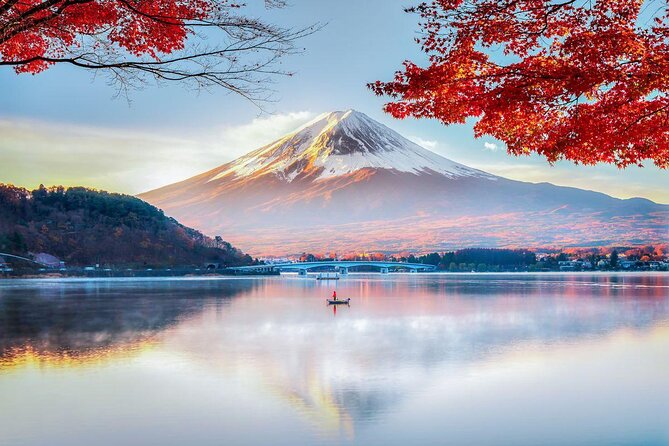
• A high level of physical fitness is required for the 1-day Mt. Fuji trekking tour to the summit.
• Climbers should pack essential gear, including sturdy hiking boots, waterproof jackets, and wind-resistant pants.
• The Yoshida trail is the recommended route, starting from the Fifth Station, with the option of private transportation and guides.
• Climbers should be prepared for changing weather conditions, steep inclines, and high altitude challenges.
• It’s crucial to stay informed about weather forecasts, trail conditions, and altitude sickness symptoms to ensure a safe and successful climb.
It's also worth checking out some other tours and experiences nearby.
Preparing for the Climb
Climbing Japan’s iconic Mount Fuji demands careful preparation, as the trek’s steep inclines, unpredictable weather, and high altitude require a strong physical foundation and the right gear.
Travelers should assess their physical fitness level honestly, as the climb can be challenging.
It’s essential to pack layers of breathable clothing, sturdy hiking boots, and waterproof gear to combat the elements.
Don’t forget to bring snacks, plenty of water, and a first-aid kit.
It’s also crucial to check the weather forecast beforehand and stay informed about any trail closures.
With the right mindset and equipment, climbers will be well-prepared to tackle the mountain and enjoy the breathtaking views from the summit.
The Ascent Begins

As they step out of the Fifth Station’s bustling hub, trekkers embark on the Yoshida trail, their footsteps echoing through the serene forest landscape.
The air is crisp, and the scent of cedar and cypress fills their lungs as they begin their ascent.
The gentle slope of the trail eases them into the climb, allowing them to find their rhythm and warm up their muscles.
With each step, the trees grow taller, and the sounds of the station fade into the distance.
The trekkers’ senses come alive as they enjoy the natural beauty of Mt. Fuji’s foothills, their excitement and anticipation building with every meter gained.
Conquering the Summit
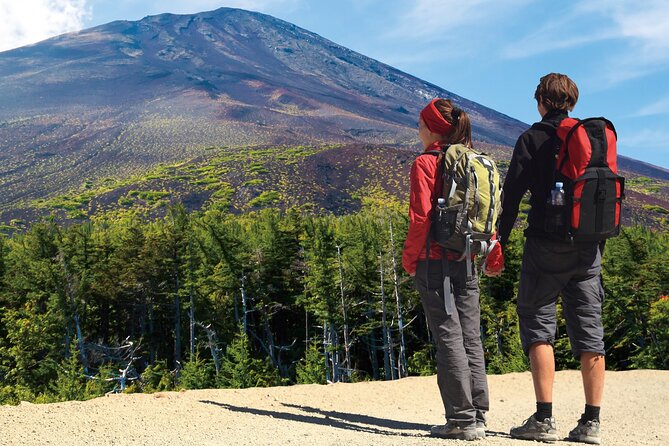
The trekker’s determination intensifies as they push beyond Seventh Station, where the trail’s gradient steepens and the air thins, demanding every ounce of strength and endurance to conquer the mighty summit of Mt. Fuji. The climb becomes more challenging, but the breathtaking views of the surrounding landscape keep them motivated.
| Elevation | Landmark |
|---|---|
| 3,000m | Eighth Station |
| 3,500m | Ninth Station |
| 3,700m | Tenth Station |
| 3,778m | The Summit |
| 2,300m | Fifth Station (return) |
As they near the top, the trekker’s sense of accomplishment grows, and the thrill of standing at the highest point in Japan becomes a reality. The stunning vistas from the summit are a testament to their perseverance and a reward for their hard work.
Safety Guidelines and Tips
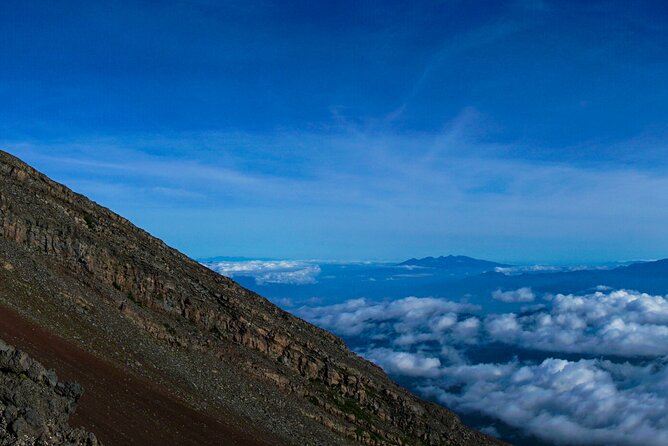
Trekking to the summit of Mt. Fuji demands not only physical endurance but also a keen sense of awareness and respect for the mountain’s unpredictable weather and steep terrain.
Climbers must be prepared for sudden changes in weather, including snowstorms, strong winds, and extreme temperatures.
It’s essential to stay informed about weather forecasts and trail conditions before and during the climb.
They should also bring necessary gear, such as crampons, ice axes, and warm clothing, and be prepared to turn back if the conditions become too hazardous.
Plus, climbers should stay on designated trails, follow guide instructions, and avoid taking unnecessary risks to ensure a safe and successful climb.
Mt. Fuji’s Unique Features
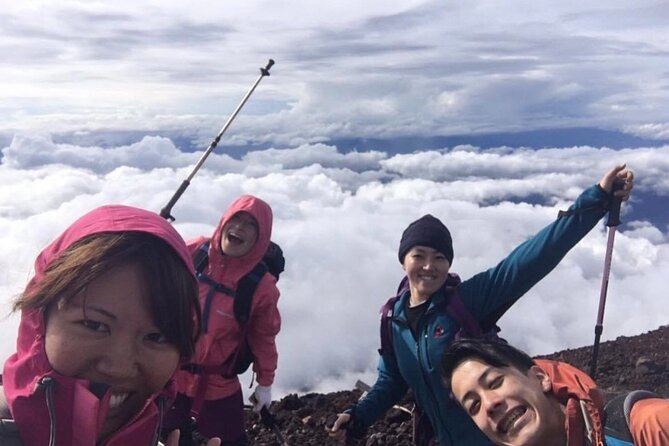
Rising majestically from the Japanese landscape, Mt. Fuji’s symmetrical cone shape is a geological wonder, formed by a combination of volcanic and tectonic forces over thousands of years.
This dormant volcano stands at an impressive 3,776 meters, making it Japan’s highest peak.
Mt. Fuji’s unique features don’t stop there – its snow-capped summit is surrounded by five lakes, providing breathtaking views and a serene atmosphere.
The mountain’s slopes are also home to a variety of flora and fauna, including Japanese black bears, monkeys, and over 1,000 species of plants.
As you ascend, you’ll witness the dramatic change in climate and vegetation, making every step of the journey an unforgettable experience.
What to Expect on Tour
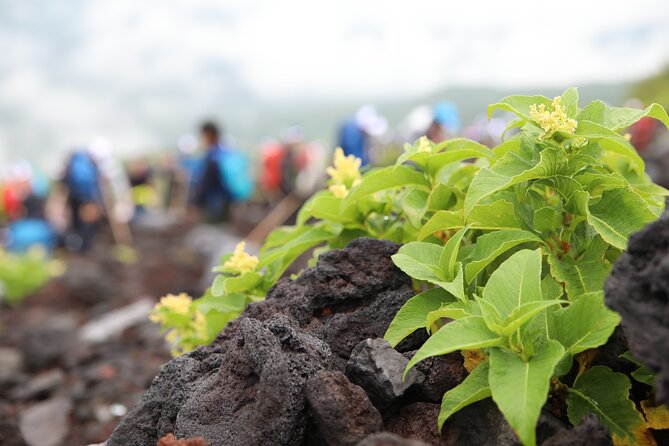
As participants embark on this guided adventure, they’ll be immersed in a challenging yet rewarding experience that pushes their physical limits while revealing the breathtaking beauty of Mt. Fuji.
They’ll start at the Fifth Station, the main entrance to climbing Mt. Fuji, and follow the gentle Yoshida trail to the Seventh Station, where panoramic views await.
Along the way, they’ll refuel with snacks and bottled water, and enjoy the convenience of private transportation with WiFi on board.
With hotel pick-up and drop-off, participants can focus on the adventure ahead.
Throughout the tour, their experienced guide will provide expert insights and support, ensuring a memorable and safe journey to the summit of Japan’s iconic peak.
Physical Demands and Risks
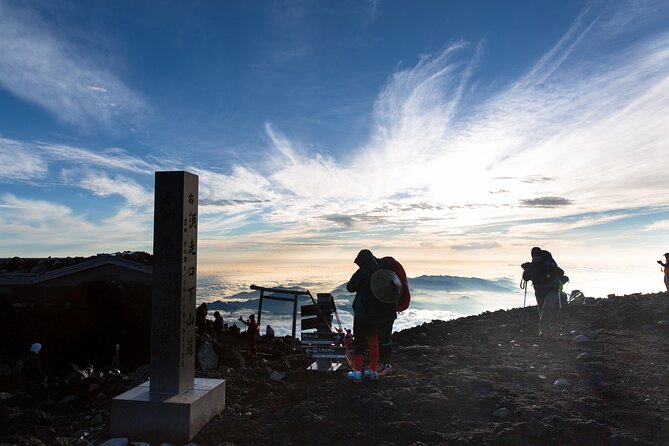
Guides carefully assess each participant’s physical capabilities before embarking on the Mt. Fuji trek, as the climb demands a high level of fitness and endurance.
The steep incline and high altitude can be challenging, even for experienced hikers.
Climbers must be prepared for changing weather conditions, including strong winds, rain, and snow.
The trek also involves navigating rocky terrain and steep stairs, which can be hazardous.
Plus, the high altitude can cause altitude sickness, which can be serious if not recognized and treated promptly.
It’s essential for participants to be honest about their physical limitations and health conditions to ensure a safe and successful climb.
Essential Gear and Equipment
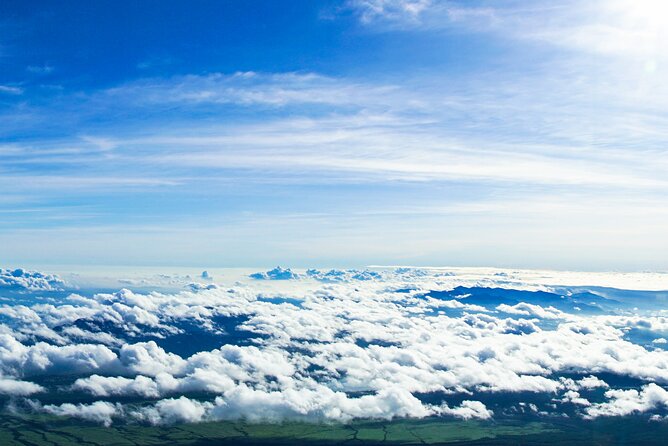
Climbers tackling Mt. Fuji’s towering peak should pack essential gear, including sturdy hiking boots, waterproof jackets, and wind-resistant pants, to brave the mountain’s unpredictable weather conditions.
A backpack with rain and wind protection is also a must-have.
Don’t forget to bring a first-aid kit, headlamp, and extra batteries in case of emergencies.
It’s also crucial to stay hydrated, so bring a refillable water bottle and energy-rich snacks.
Plus, climbers should wear layers of breathable clothing, including a base layer, fleece, and waterproof outerwear.
Lastly, a map, compass, and GPS device will ensure you stay on track.
Here's a few more nearby tours and experiences we think you'll like.
Frequently Asked Questions
Can I Store My Luggage at the Fifth Station While Climbing?
She wonders if she can stash her luggage at the Fifth Station while tackling the climb. Unfortunately, there aren’t any storage facilities available, so she’ll need to make other arrangements or carry her gear with her.
Are There Restrooms Available Along the Yoshida Trail?
Restrooms are available along the Yoshida trail, albeit limited, with facilities at the Fifth and Seventh Stations, and a few basic toilets at intermediate points, but climbers should be prepared for rustic conditions and long lines.
Can I Use My Drone to Capture Aerial Views of Mt. Fuji?
She checks local regulations before flying her drone, as Japan has strict rules regarding drone usage, especially in national parks and protected areas, to ensure responsible and safe aerial capturing of Mt. Fuji’s majesty.
Are There Any Age Restrictions for This Tour?
She’s wondering if there’s an age limit for this adventure. While there isn’t a specific age restriction, travelers should be physically fit, so it’s essential to assess individual health and fitness levels before booking.
Can I Request a Female Guide for My Private Tour?
She can request a female guide for her private tour, and the local provider will do their best to accommodate her preference, ensuring a comfortable and empowering experience on her adventure.
Not for you? Here's more of our most recent tour reviews happening neaby
- Lake Ashi Hakone Owakudani Kowakien With Daily Chauffeur
- Lets Lunch / YANAKA MADAME HOME / Local Dish & Rice Ball Making.
- Private Kamakura and Yokohama Sightseeing Day Trip With Guide
- For BUSINESS TRAVELER – Business+Leisure With Jpy⇄Eng INTERPRETER Service
- Tokyo Cyberpunk Street Photo Tour
- One Day Private Tour to Nikko With English Speaking Driver
- Guided Small Group Historical Tour in Asakusa
- Tokyo Authentic Samurai Experience, Bushido at a Antique House.
- Private Akihabara Walking Tour With Otaku and Photography
- Mt. Fuji Private Sightseeing Tour With Local Guide/Photographer
- Tokyo Customized Private Walking Tour With Local Guide
- Full-Day Panoramic Bus Tour in Tokyo With Bay Cruise
- Tokyo City Private Day Tour With Pick Up.
- Challenge Sumo Wrestlers and Enjoy Meal in Tokyo
- Kamakura Tour
Final Words
Having conquered Mt. Fuji’s summit, you’ll descend with an immense sense of pride and accomplishment.
The breathtaking views and unforgettable experiences will stay with you long after the trek.
Remember to take a moment to appreciate the natural beauty of Japan’s iconic mountain, and don’t forget to capture the memories in photos.
With a successful climb under your belt, you’ll leave Mt. Fuji feeling invigorated and inspired, ready to take on the next adventure that comes your way.

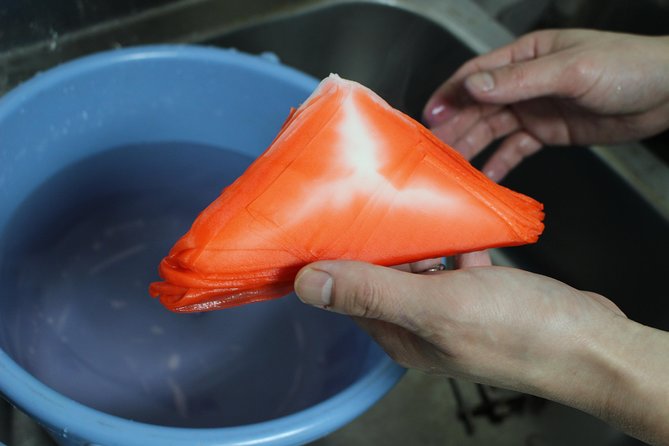
![[Ishigaki]Mangrove SUP/Canoe + Blue Cave Snorkeling](https://yokosojapan-tour.com/wp-content/uploads/2024/09/1_ishigakimangrove-sup-canoe-blue-cave-snorkeling.jpg)
